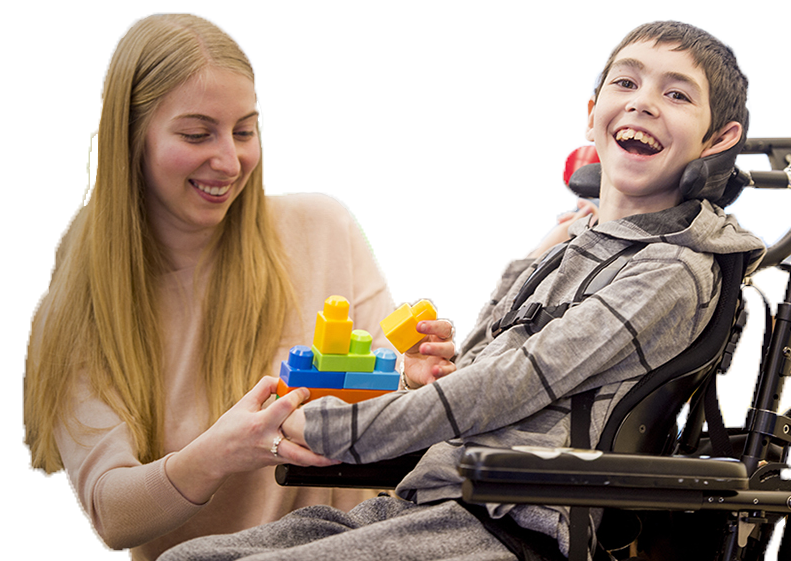Resources Directory
Search below to find a hospital, doctor, therapy, and more

National Center on Birth Defects and Developmental Disabilities (NCBDDD)
"The Children's Health Act of 2000, passed by Congress and signed into law by former President Clinton, required the establishment of the National Center on Birth Defects and Developmental Disabilities (NCBDDD) at CDC. In April 2001, NCBDDD was officially established. Currently, the center includes three divisions – the Division of Birth Defects and Developmental Disabilities, the Division of Human Development and Disability, and the Division of Blood Disorders.
Helping people live to the fullest
The mission of the CDC’s National Center on Birth Defects and Developmental Disabilities (NCBDDD) is to promote the health of babies, children and adults and enhance the potential for full, productive living. To achieve its mission, our Center works to:
Identify the causes of birth defects and developmental disabilities;
Help children to develop and reach their full potential; and
Promote health and well-being among people of all ages with disabilities, including blood disorders.
We seek to accomplish these goals through research, partnerships, and prevention and education programs.
Birth Defects and Developmental Disabilities
Birth defects affect 1 in 33 babies and are a leading cause of infant death in the United States. More than 5,500 infants die each year because of birth defects. In addition, over 500,000 children are diagnosed with a developmental disability.
CDC and its partners are working to change these figures. With more information, the causes of these birth defects and developmental disabilities can be identified – and action can be taken to protect our children, and to develop new ways to help women have healthy babies.
Three girls laying on the floor with their chins in their hands
Helping Children Reach Their Full Potential
Much of our work focuses on protecting people who are especially vulnerable to health risks – including children. The early years of life (birth to 5 years of age) are critical to a child’s cognitive, social, and emotional development. CDC works with partners to develop public health tools and interventions that give all children the opportunity to reach their full potential.
Ten Significant Public Health Achievements United States, 2001-2010: Maternal and Infant Health
The past decade has seen significant reductions in the number of infants born with NTDs. Improvements in technology and endorsement of a uniform newborn-screening panel of diseases have led to earlier life-saving treatment and intervention for at least 3,400 additional newborns each year and newborn screening for hearing loss increased from 46.5% in 1999 to 96.9% in 2008.
Anyone of any age can have a disability. More than 50 million—which is about 1 in 5—Americans report having some level of disability. People with disabilities need health care and health programs for the same reasons anyone else does – to stay well, active, and a part of the community. To be healthy, people with disabilities require health care that meets their needs as a whole person, not just as a person with a disability.
Our Center works to ensure that people of all different abilities are able to live their life to the fullest. Our work focuses on promoting the health of people with disabilities, and preventing complications or other health conditions secondary to a person’s disability.
Protecting the Health of People with Blood Disorders
Blood disorders – such as sickle cell disease, anemia, and hemophilia – affect millions of people each year in the United States, cutting across the boundaries of age, race, sex, and socioeconomic status. Men, women, and children of all backgrounds live with the complications associated with these conditions, many of which are painful and potentially life-threatening. With proper preventive actions and early intervention, many of these disorders and their complications could, to a large extent, be eliminated. We are dedicated to reducing the public health burden resulting from these conditions by contributing to a better understanding of blood disorders and their complications; ensuring that prevention programs are developed, implemented, and evaluated; ensuring that information is accessible to consumers and health care providers; and encouraging action to improve the quality of life for people living with or affected by these conditions.
From beginning to end, a better life for all
It might be the greatest wish all people have or themselves and their loved ones: a healthy, happy life. Often, when one’s mind and body work perfectly, good health is taken for granted. Yet millions of people live every day with some form of disability, facing limitations in daily life activities. This includes infants and children with birth defects, genetic conditions, blood disorders, and developmental disabilities such as intellectual disabilities, autism, cerebral palsy, muscular dystrophy, and vision problems. These children might have challenges as they grow and learn about life, and often face more health problems as they grow older. "
